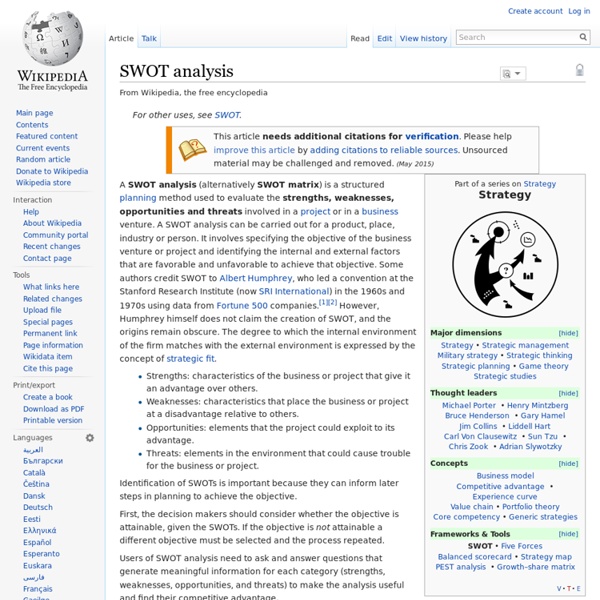DO IT - A Simple Creativity Process - Creativity Techniques from MindTools
A Simple Process for Creativity Follow this 4-step process. © iStockphoto/3dbrained DO IT is a process for creativity. Techniques outlined earlier in this chapter focus on specific aspects of creative thinking. DO IT bundles them together, and introduces formal methods of problem definition and evaluation.
The Secret Magic Mathematic Formula of Innovation! - Strategy of Innovation
Because of the globalization of business, commercial competition is everyday harder and harder. To maintain a leader position, or just to survive, companies must propose rapidly and efficiently to their clients new attractive goods and/or services. For this, they have to innovate, to evolve by creating new market opportunities or by adapting themselves to changing markets. Therefore, as a responsible CEO or Manager, you know that: .... but how?!
10 Tips for Effective Creative Brainstorming
Brainstorming can either be a creative gold mine or a time wasting disaster. Brainstorming is often discussed in relation to a business environment. In college, nearly every one of my business school textbooks had an entire chapter dedicated to the concept.
Scamper - Creativity tools from MindTools
Improving Products and Services This tool can help you develop new products and services. © iStockphoto/aladin66 It can often be difficult to come up with new ideas when you're trying to develop or improve a product or service. This is where creative brainstorming techniques like SCAMPER can help.
Validate your startup idea by asking 3 simple questions
Last week, I stumbled across a personal post from a founder on his thoughts after first month of his startup. He writes in the post that he hasn’t been satisfied with the traction received so far and wonders whether existing product is the right path to continue on. I had exact same questions when I was starting up Wingify and now that we have seen some traction, I thought I should expand on a comment I made on how to know if your startup idea is the right one.
Methods list
paper prototyping parallel design participatory evaluation patterns performance testing planning usability pleasure post release tesing prototyping questionnaires rapid prototyping remote testing requirements meeting scenarios of use stakeholder meeting standards: ISO 13407 storyboarding style guides subjective evaluation surveys task analysis
Step by step guide to brainstorming
By Jeffrey Baumgartner Preface: Brainstorming Is Not an Effective Creativity Tool Before you read the article below, there is one thing you should know.
endeavorglobal's Channel
Linda Rottenberg on OneWire Play Endeavor CEO Linda Rottenberg is interviewed by OneWire's Skiddy von Stade about her entrepreneurial journey, which was also featured in Business Insider. 2013 Endeavor Gala
Brainstorming
What this handout is about This handout discusses techniques that will help you start writing a paper and continue writing through the challenges of the revising process. Brainstorming can help you choose a topic, develop an approach to a topic, or deepen your understanding of the topic’s potential.
Start-up due diligence is not mysterious
By Marty Zwilling, contributor After you have successfully attracted angels or venture capital with your million dollar product idea and you have a signed term sheet, there is still one more hurdle to overcome before investors write the check. This is the dreaded "due diligence" process. For no good reason, investor due diligence seems shrouded in mystery, when in fact it is nothing more than a final integrity check on all aspects of your business model, team, product, customers and plan. In my view, understanding due diligence can only improve information flow, and leads to a better long-term partnership with your investor.
Six Strategies for Differentiated Instruction in Project-Based Learning
Project-based learning (PBL) naturally lends itself to differentiated instruction. By design, it is student-centered, student-driven, and gives space for teachers to meet the needs of students in a variety of ways. PBL can allow for effective differentiation in assessment as well as daily management and instruction. PBL experts will tell you this, but I often hear teachers ask for real examples, specifics to help them contextualize what it "looks like" in the classroom.



